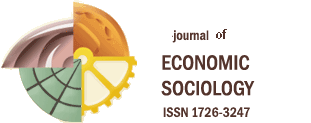Vasiliy Anikin
Social Structure in new Russia: Evidence from Bayesian Latent Class Analysis
The study presents the results of the multidimensional approach to the social stratification of contemporary Russian society. The proposed model employs the Weberian concept of life chances which has been operationalized on the map of 24 binary items measuring the positive and negative privileges of individuals and their households in four major domains of life, economic stability and security, industrial relations, human development, and economic consumption and leisure. Drawing from the Monitoring data conducted by the Federal Center of Theoretical and Applied Sociology of the Russian Academy of Sciences in 2015 and 2019, we proposed the posterior model of vertically integrated five socioeconomic classes. These are as follows (2015 and 2018): disadvantaged (lower) non-economic class (23 and 21,8%, correspondingly), disadvantaged (lower) economic class (19,4% and 17,3%), two semi-privileged classes—lower middle class (29,4% и 34,1%) and true middle class (15,8% и 13,4%)—and advantaged (upper middle) class (12,4% and 13,4%). The obtained results reassess the popular view that there are no big classes in industrially advanced societies and highlight the importance of the noneconomic forces of multidimensional stratification of the Russian society in the posttransition era. The results also showed that the disadvantaged economic class demonstrates the highest degree of protest voting. The upper middle class turned out to be the most politically loyal, which saliently contradicts the prevailing stereotypes about the patterns of the political behavior of citizens in the new Russia.




.gif)






 ©
© 